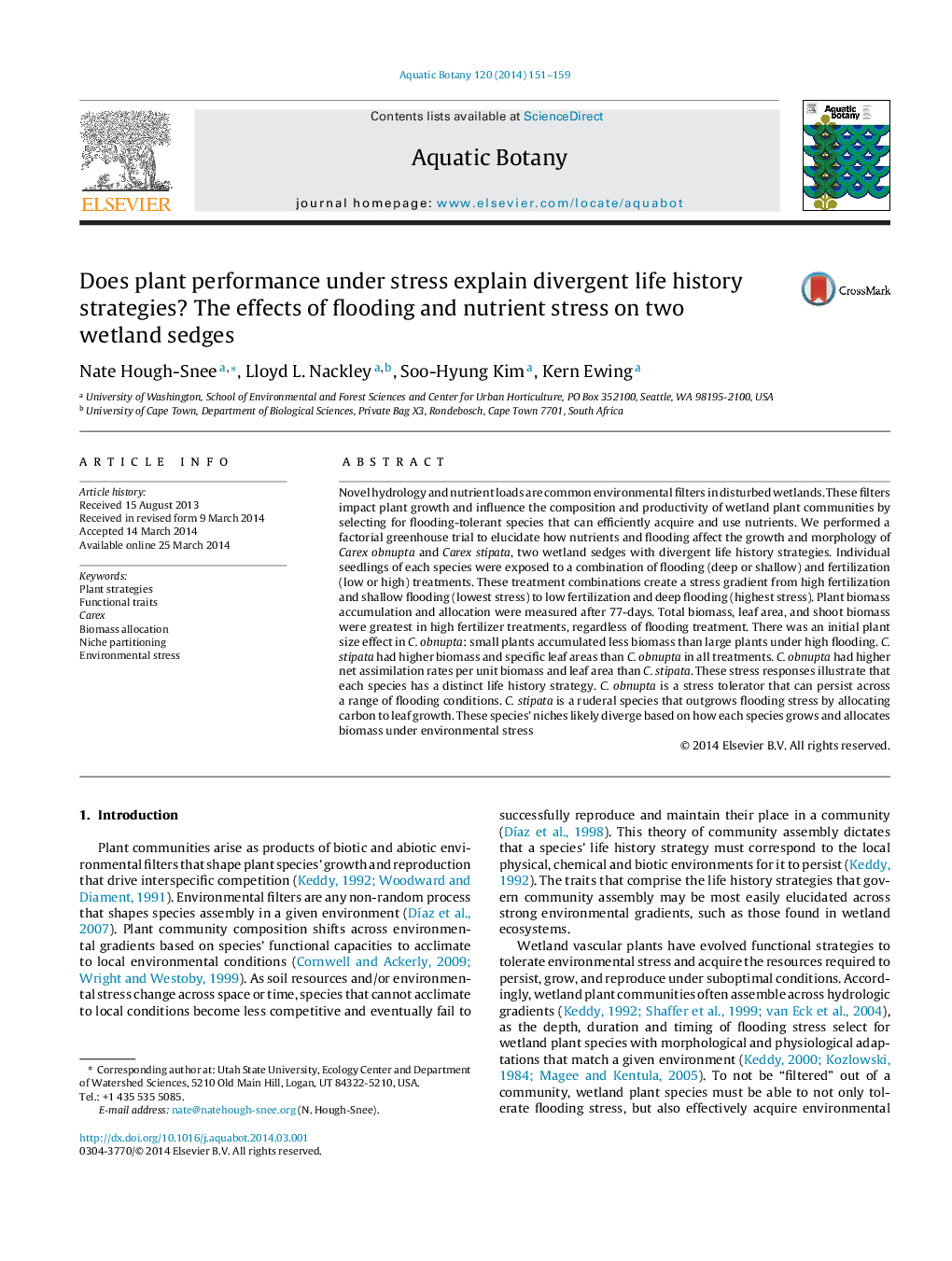| کد مقاله | کد نشریه | سال انتشار | مقاله انگلیسی | نسخه تمام متن |
|---|---|---|---|---|
| 4527696 | 1625822 | 2015 | 9 صفحه PDF | دانلود رایگان |
• Environmental stress responses may help to explain plant life history strategies.
• We exposed seedlings of two Carex species to flooding and nutrient stress.
• Flooding stress was mitigated by high nutrients in both species.
• Carex obnupta is a stress tolerator while Carex stipata is a ruderal competitive species.
• Each species’ ecological niche corresponds to their performance under stress.
Novel hydrology and nutrient loads are common environmental filters in disturbed wetlands. These filters impact plant growth and influence the composition and productivity of wetland plant communities by selecting for flooding-tolerant species that can efficiently acquire and use nutrients. We performed a factorial greenhouse trial to elucidate how nutrients and flooding affect the growth and morphology of Carex obnupta and Carex stipata, two wetland sedges with divergent life history strategies. Individual seedlings of each species were exposed to a combination of flooding (deep or shallow) and fertilization (low or high) treatments. These treatment combinations create a stress gradient from high fertilization and shallow flooding (lowest stress) to low fertilization and deep flooding (highest stress). Plant biomass accumulation and allocation were measured after 77-days. Total biomass, leaf area, and shoot biomass were greatest in high fertilizer treatments, regardless of flooding treatment. There was an initial plant size effect in C. obnupta: small plants accumulated less biomass than large plants under high flooding. C. stipata had higher biomass and specific leaf areas than C. obnupta in all treatments. C. obnupta had higher net assimilation rates per unit biomass and leaf area than C. stipata. These stress responses illustrate that each species has a distinct life history strategy. C. obnupta is a stress tolerator that can persist across a range of flooding conditions. C. stipata is a ruderal species that outgrows flooding stress by allocating carbon to leaf growth. These species’ niches likely diverge based on how each species grows and allocates biomass under environmental stress
Journal: Aquatic Botany - Volume 120, Part B, January 2015, Pages 151–159
